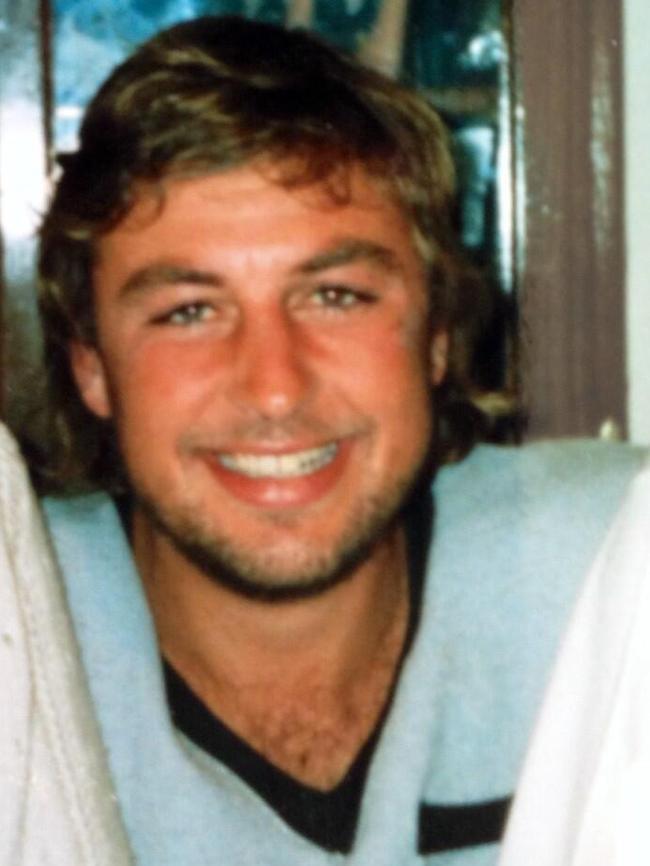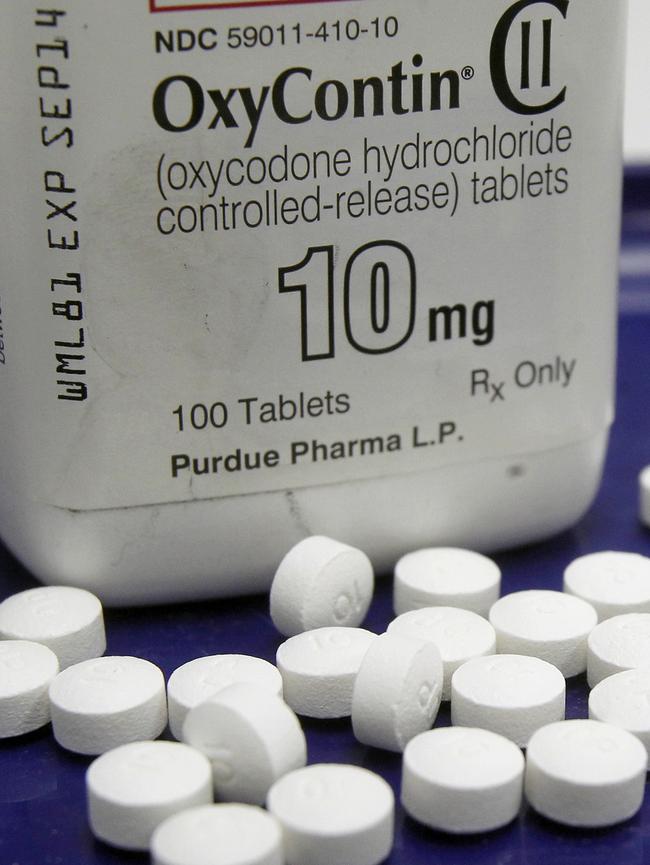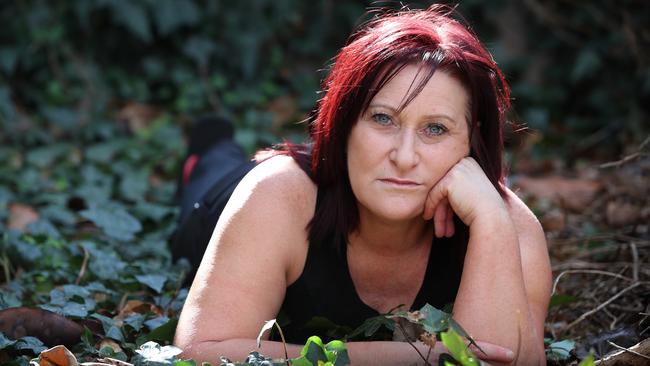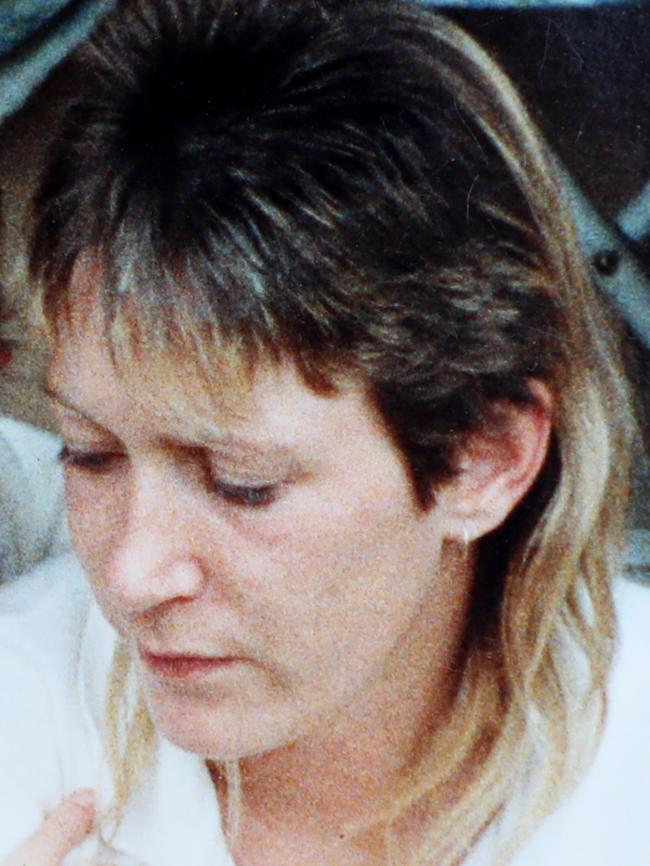Prescription medication: The secret addiction costing lives
WHEN Paul Kanis fell while out for a run in the Latrobe Valley, he never imagined it would start a devastating chain of events that would eventually take his life.

VIC News
Don't miss out on the headlines from VIC News. Followed categories will be added to My News.
- Mum’s pain sparks review for addict son
- Drug scourge plaguing our schools
- It takes tough love to beat ice
WHEN Paul Kanis fell while out for a run, he never imagined it would start an addiction that would eventually take his life.
Paul shattered bones in his left hand and arm and endured three rounds of surgery to try to fix the damage.
His GP prescribed painkillers and Paul quickly became addicted, getting caught in a 10-year prescription drug-taking cycle that only ended on January 30, 2012, when his body was found in a park near his Traralgon home.
“We were ringing on the night of the 29th and Paul wasn’t answering his phone,” his mother Suzie Kanis says.
“We think Paul went for a walk with his dog and he was found the next morning lying near a creek. Initially the people who found Paul thought he was sleeping. His dog had stayed with him all night.”
Coroner Jacinta Heffey found Paul Kanis, 38, an asthmatic who was suffering pneumonia, died from a combination of benzodiazepines and methadone. After his fall and surgeries, Paul had been prescribed a concoction of pills, including OxyContin and then Suboxone to replace the craving for OxyContin.
He was also on antidepressant medication, prescribed by a doctor. The methadone was prescribed to replace the Suboxone.


A week before he died, Paul dropped in to his sister’s home to celebrate Suzie’s birthday. It was one of the last times Suzie saw her son.
“I cut his hair for him but when it came time to sing Happy Birthday, he’d gone upstairs to lie down.
He told me he felt really sick,” she says. “I saw him two days before he died and he said he had a sore left lung.
“He called an ambulance the following day and the ambulance people who treated him felt his lungs were clear.”
Suzie is frustrated the two doctors treating Paul didn’t share information with each other about what they were prescribing. She believes if an electronic real-time prescription monitoring system had been in place, his doctors would have been alerted to the mix of drugs he was prescribed and could have intervened.
“Why did the doctors not check what medication they were each giving him?” Suzie says. “Paul was innocent in all of this. I just want to spare another mother going through what I’m going through.”
Research from the Penington Institute last year showed 71 per cent of overdose deaths in Australia were due to prescription medications.
The National Drug and Alcohol Research Centre says around 800 Australians a year die from prescription drug overdoses, particularly opioids. Opioids are stronger painkillers and include drugs such as codeine, fentanyl, methadone and morphine. Australia ranks eighth in the world’s top 30 users of prescription painkillers like these.

The Rural Doctors Association warned last month that some elderly people in regional areas are onselling prescription medications to help pay their bills and feed a demand from dealers and addicts.
But Australia isn’t the only country battling a prescription medication epidemic. In the US, some 142 people a day die from prescription opioid overdoses — that’s more lives lost than through car crashes and shootings combined.
President Donald Trump launched a commission to examine the US’s opioid crisis in March and campaigners have described the situation as a “state of emergency”.
Bee Ismail, of ScriptWise, a non-profit organisation aiming to reduce prescription medication misuse and overdose, says there also needs to be more education about the potentially addictive nature of some prescription drugs.
“Most of the families we see who have lost a loved one through prescription medication say they didn’t know you can get addicted,” she says. “People go to hospital for surgery or have a wisdom tooth removed by their dentist and they then take Panadeine Forte and don’t realise that you can get addicted quickly.”
Julie Rae, of the Alcohol and Drug Foundation, agrees there is a lack of awareness about the addictive nature of some medications.
“People are at risk of serious harm — and they don’t even know it,” Rae says.

“We’re talking about your mums, dads, construction workers, healthy individuals. Average Australians are dying from these addictive medications.
“Most shockingly, the majority of overdoses are accidental, which means they could have been prevented.
“Chronic pain, anxiety, stress, trauma and insomnia are all very serious conditions, but are often treated long term with addictive medicine like painkillers or relaxant-type medications.
“Strong painkillers — like codeine, OxyContin and Endone — help a lot of Australians manage intense pain after surgery or dental work. But they are also opioids, just like heroin, and they can be fatal.
“The scary thing is almost half of all prescriptions handed out in Australia are not for treating these conditions. People are using opioids for everything from the common headache to dealing with a bad day at work. We need to get the message out that legal drugs can be harmful if overused.”
Tasmania was one of the first Australian states to begin tackling prescription drug misuse. It trialled a real-time prescription monitoring system that records when a prescription is issued and where and when it is filled. If someone goes to another doctor to get the same prescription issued, that GP can immediately see that a prescription has already been issued and filled. In Tasmania, the technology resulted in an average 40 red flags a day — electronic alerts that people were doctor-shopping and misusing prescriptions — and the system stopped the dispensing of opioid painkillers to between 30 and 50 people each day who were suspected of abusing drugs.
Victorian Health Minister Jill Hennessy says the monitoring system is expected to be rolled out in Victoria next year. It will incorporate 1900 GP clinics, 1300 pharmacies and 200 hospitals.


Rayleen Fagan believes the system can’t be introduced soon enough to prevent more unnecessary deaths. Her sister Anne Brain died at her Sunshine West home on Christmas Eve 2011 and was found by her daughters. When she died, Anne, 44, was addicted to a mixture of painkillers and suffered anxiety and depression.
“I have a back injury myself but I won’t take pain medication because I know what can happen. I think painkillers are handed out too freely,” says Fagan, 51, from Melton.
“Anne was a beautiful child. She was a pretty kid but Mum and Dad separated when she was 14 and then she became difficult. Years later I found out she was prescribed Valium then because she said she was feeling depressed.
“From there she smoked dope and then she was introduced to heroin. So the family moved her to the countryside in Queensland to get her away from drugs but by then she was taking Panadeine Forte. She was always raiding someone’s medicine cupboard — she had to have medication, even Nurofen Plus.”
At the time she died, Anne was on eight prescription drugs and doctor-shopped to get a regular supply.
“At one stage, she was taking 17 Panadeine Forte in a morning and she spent all day going from doctor to doctor,” Fagan says. “Anne knew she was in trouble but it wouldn’t stop her getting the drugs. We felt helpless and she was unbearable when she didn’t get her medication. She’d get angry and aggressive and felt the world owed her.
“I’d ring her doctors and ask them not to give her medication because I knew there would be a day when her heart stopped beating and eventually that day happened. My poor nieces did not need to find their Mum dead on the couch on Christmas Eve.
“I’ve had two major surgeries but have gone through that without opiates. When you’re prescribed medication by your GP, you believe it will help you and people have no idea that if you take these kinds of tablets you face a life of hell.”

HELEN’S* STORY
HELEN, a healthcare worker in the eastern suburbs, became addicted to prescription painkillers after a car accident and went through rehabilitation twice to get clean
“SIX months after a car accident, I got chronic pain down my left leg. I damaged the sacroiliac joint between my lower spine and pelvis and that triggered sciatic pain.
I began dabbling with over-the-counter codeine but the problem got worse after my second child was born. I was in incredible pain.
My doctor put me on OxyContin and I was hooked straight away. I was in a miserable marriage and the medication made me feel like Superwoman. I could function as a mother and get through my shift at work. It made me euphoric.
When my doctor didn’t want to prescribe me OxyContin any more, I eventually found three other doctors who were prescribing me at the same time. They didn’t question me, perhaps because I was in the health profession and said the right things.
I was on OxyContin for three years. The first year I loved it, the second year it got harder to manage and by the third year I was desperate to get off it but couldn’t.
A doctor gave me two weeks’ worth of pills but they were gone in a couple of days. I was always visiting one GP and thinking about how I’d get my next lot and what lie I would tell next. It became all-consuming.
I became withdrawn and at one point my boss called me into her office and said she wanted to help me. Colleagues knew I was on OxyContin for chronic pain but didn’t know how much I was taking. I felt I was neglecting my kids. My husband and I had separated and I couldn’t wait to get the kids to daycare or school so I could sit on the couch and take the medication to stave off withdrawal.
I was a shell of myself. I was gaunt, miserable and falling apart. I saw addicts at work and thought, “What are you doing to yourself?” and I couldn’t relate that I was just as sick.
I’d say I was going to stop taking the medication, but my brain was in so much turmoil. The physical pain was horrendous, too. I’d have stomach cramps, diarrhoea, trembling, sweating and aches and pains all over.
Eventually I went to a private rehab clinic and did a 28-day program. I left the clinic and relapsed on codeine the next day — I was terrified. But I went straight back to rehab and although withdrawal was hell on earth, I did the program again and I haven’t used OxyContin since. I’ve been clean for six years now.”
* NAME CHANGED


